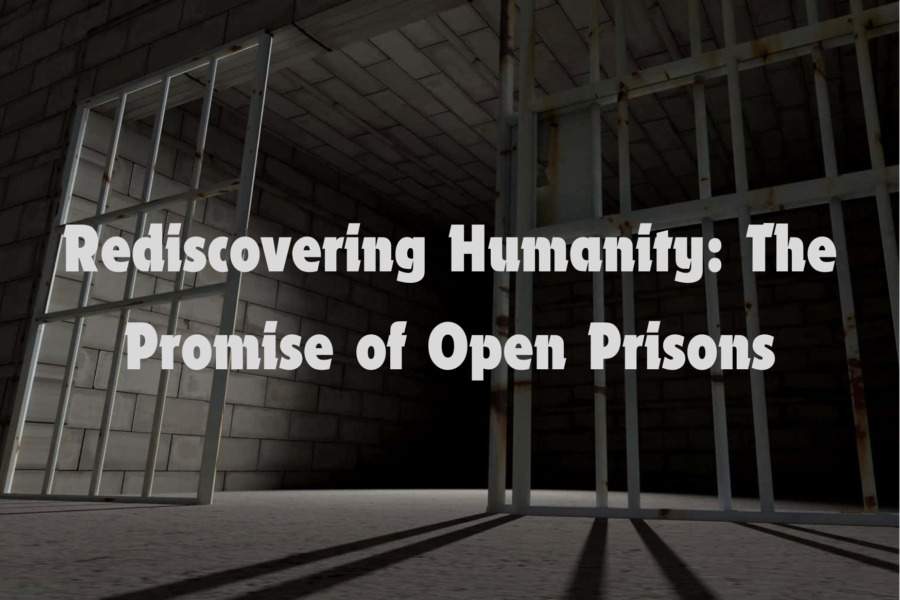Introduction
Justice V.R. Krishna Iyer has eloquently stated, “Every saint has a past, and every sinner a future, never write off the man wearing the criminal attire but remove the dangerous degeneracy in him, restore his retarded human potential by holistic healing of his fevered, fatigued or frustrated inside and by repairing the repressive, though hidden, injustice of the social order which is vicariously guilty of the criminal behaviour of many innocent convicts.” His words underscore the transformative power of a compassionate approach to criminal justice, one that seeks to rehabilitate rather than merely punish.
At the heart of this philosophy lies the concept of open prisons, a revolutionary model that challenges conventional notions of incarceration. These institutions, based on the principles of self-discipline and trust, offer a humane and reformative environment for selected inmates, providing them with opportunities for personal growth, skill development, and eventual reintegration into society.
The Open Prison Model: A Humane Approach
An open prison can be understood as a penal establishment where prisoners serve their sentences with minimal supervision and territorial security, without being confined to cells. This concept draws from the wisdom of Sir Alexander Paterson, who famously stated, “A man is sent to prison as punishment and not for punishment.”
The open prison model combines the best elements of parole, probation, and closed prisons, yet it is not a routine process of prisoner transfer. Instead, a screening committee meticulously evaluates inmates’ mental and physical fitness, behavioural conduct, and reformatory potential before deeming them eligible for transfer to these semi-open or open institutions.
The Hindi film “Do Aankhen Barah Haath” (1957) serves as a moving depiction of the open prison concept in India, portraying a young warden who transforms six notorious murderers into virtuous individuals through hard work and kind guidance on a dilapidated farm.
Variations and Success Stories
The Model Prison Manual classifies open prison institutions in India into three types:
- Semi-Open Training Institutions are attached to closed prisons just beyond the enclosed perimeter and are under relatively high-security surveillance. Prisoners showing reformation potential may be transferred to open prisons and colonies.
- Open Training Institutions/Work Camps are established where activities like digging canals, constructing dams, building roads, and land reclamation can be organized.
- In Open Colonies, inmates can bring their families. Both inmates and family members can work in agriculture, cottage industries, or other suitable livelihoods, earning wages at par with those outside. They maintain themselves and their families with these wages.
Success stories abound, such as the open prison campus in Anantapur, Andhra Pradesh, where inmates cultivate medicinal herbs and crops, earning a livelihood and gaining valuable agricultural skills.
The Shri Sampurnanand Khula Bandi Shivir in Sanganer, Rajasthan, is unique in allowing convicts to live with their families, build their own houses, and work within a 10-km radius, fostering a sense of responsibility and community.
Legal Recognition and Advantages
The Supreme Court of India has recognized the merits of open prisons. In Ramamurthy vs. State of Karnataka (1997), the court observed that open prisons represent one of the most successful applications of the principle of individualization of penalties, aiming at social readjustment. In Dharmbir vs. State of Uttar Pradesh (1979), the apex court highlighted the advantages of open prisons for young offenders, protecting them from issues prevalent in conventional jails.
Conclusion
Open prisons embody a paradigm shift in our approach to criminal justice, one that prioritizes reformation over mere retribution. By fostering an environment of trust, responsibility, and skill development, these institutions offer a glimmer of hope for those who have strayed from the path of righteousness.
In an age where mass incarceration rates remain alarmingly high, open prisons represent a beacon of hope, a testament to the belief that every individual deserves a second chance at a fulfilling life. By embracing this model, we not only rediscover our shared humanity but also pave the way for a more just and compassionate society.
Contributed by-
Saachi Minocha
National Law University, Jodhpur (2023-28)

